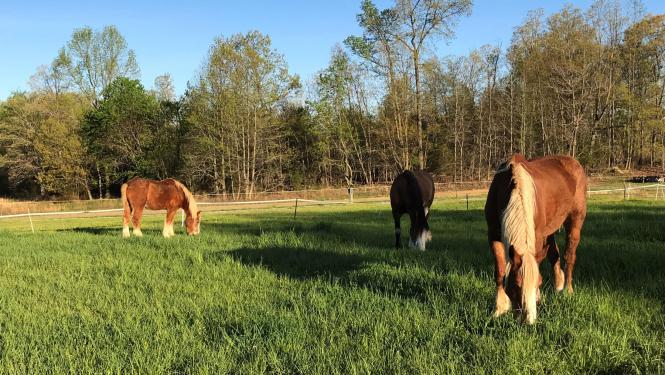What should we expect from our forages? How can we guarantee we are getting the most from them? Learn about some of the guiding principles of forage management.
Guiding principle 1: It takes more than one species to diversify production
Depending on your soil type, you will have one of three forage systems in the Southeastern US:
- Bermuda/Bahia based (typically sandy soils)
- Tall Fescue based (typically clay or heavy soils)
- Mixed with Bermuda and Tall Fescue (clay or mixed soils)
Each of these systems we identify a dominant forage- one grass that comprises the majority of the acreage. Each of these has a weakness- a downfall for when it cannot support your operation to graze as many days as possible. Refer to this blog post to explore the detail of How To Balance Forage Production. Bottom line, make sure that your system is well balanced.
Guiding principle 2: Set your expectations for forage GROWTH appropriately
I find that farmers are generally optimistic- it’s probably what keeps us in the business. When it comes to forage growth and production, put optimism aside for realism. It is unreasonable to believe that anything we plant (annual or perennial) will be ready to graze in 30 days. There may be a unique time when planting conditions were perfect, fertility was perfect, and you are able to graze an annual in 30 days but you should not count on that happening reliably. So what is realistic? In general, after seeding count on at least 60 days for annuals and 6 months for perennials. A major issue with my rule is that plants don’t know time- they know energy status. You can use the general rule to help yourself plan ahead, but determine when plants are ready to graze based on height. Check out the recommended start/stop heights on each product page- like this one for Heavyweight sorghum sudan and this one for Oats Plus mixture.
Guiding principle 3: Set your expectations for forage PERSISTENCE appropriately
My husband and I built a big chicken run in our backyard- it was HUGE at the time. Perfect for the few chickens we had to run around, peck at the bugs and the grasses. Then, I had to get ducks. Now we have too many chickens and ducks for the size of the run. It turns into a mud puddle when it rains! I kept finding myself thinking- oh man, better put some seed here to get this back into a nice area. I have no plans to build a bigger run, no plans to get rid of any of the chickens or ducks- what makes me think that adding seed will result in anything different? If my management resulted in killing an established grass- one that had significant energy reserves and I am not going to change my management, what makes me think that I can solve the problem with seed? I will probably throw some ryegrass in there (a traffic tolerant winter annual) to help manage the mud somewhat, but I will set my expectations that I will not be able to develop a beautiful, lush chicken run without changes to MY management. If you are having thinning or failing stands of perennial grass, ask yourself why- if you can’t change that why, change your expectations. Keeping a perennial stand is much easier than establishing a new one- do what you can to manage your perennial forages for persistence.
Guiding principle 4: You will get out of your forages what you put into them
There is this saying in the cattle industry- “You can’t starve a profit out of a cow.” The same is true for forages- it does take effort, but to get great results you must put in great thought. Pay attention to the speed of growth of your forages, take tissue samples to evaluate any needs for fertilizer, replace any nutrients you remove with grazing or hay production, get off the drill when seeding to evaluate depth, and think critically about what you are doing. Buying the exact right variety of seed, setting the drill to the right setting, and planting at the right time are singular pieces to the whole puzzle. Without all of the pieces, the forages cannot do their absolute best.

Guiding principle 5: Perennial is not permanent
There is a common misconception that perennial pasture means it is permanent and unchanging. Reality could not be farther from this! Perennial pasture is full of mostly perennial grasses, but the amount each of those perennial grasses, legumes, and forbs will wax and wane throughout the year and will be different from one year to the next. A great example of this is crabgrass! Almost every fescue pasture we encounter mid-summer will have some invasion of crabgrass. White clover is also very difficult to find in pasture mid to late summer, although it will be very dense in the late fall and come spring. While the weather makes a tremendous impact on this principle, your actions can alter pasture composition as well. Conditions shortly after grazing or mowing, the timing of fertilization, and use of herbicides will all be reflected in the forages within the pasture. A great, dynamic example of this is the relationship of clovers to grasses. Read about their relationship here.
As you navigate making a grazing plan, trying to decided what to plant and when let these principles help guide your decisions.